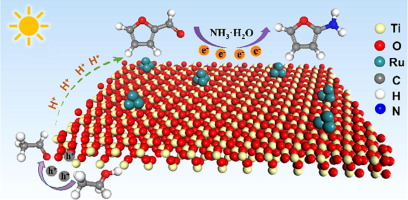73. Deciphering in-situ surface reconstruction in two-dimensional CdPS3 nanosheets for efficient biomass hydrogenation
Marshet Getaye Sendeku, Karim Harrath, Fekadu Tsegaye Dajan, Binglan Wu, Sabir Hussain, Ning Gao, Xueying Zhan, Ying Yang, Zhenxing Wang, Chen Chen, Weiqiang Liu, Fengmei Wang*, Haohong Duan* & Xiaoming Sun*
Nat. Commun. 2024, 15, 5174
DOI: 10.1038/s41467-024-49510-8

Abstract
Steering on the intrinsic active site of an electrode material is essential for efficient electrochemical biomass upgrading to valuable chemicals with high selectivity. Herein, we show that an in-situ surface reconstruction of a two-dimensional layered CdPS3 nanosheet electrocatalyst, triggered by electrolyte, facilitates efficient 5-hydroxymethylfurfural (HMF) hydrogenation to 2,5-bis(hydroxymethyl)furan (BHMF) under ambient condition. The in-situ Raman spectroscopy and comprehensive post-mortem catalyst characterizations evidence the construction of a surface-bounded CdS layer on CdPS3 to form CdPS3/CdS heterostructure. This electrocatalyst demonstrates promising catalytic activity, achieving a Faradaic efficiency for BHMF reaching 91.3 ± 2.3 % and a yield of 4.96 ± 0.16 mg/h at − 0.7 V versus reversible hydrogen electrode. Density functional theory calculations reveal that the in-situ generated CdPS3/CdS interface plays a pivotal role in optimizing the adsorption of HMF* and H* intermediate, thus facilitating the HMF hydrogenation process. Furthermore, the reconstructed CdPS3/CdS heterostructure cathode, when coupled with MnCo2O4.5 anode, enables simultaneous BHMF and formate synthesis from HMF and glycerol substrates with high efficiency.




